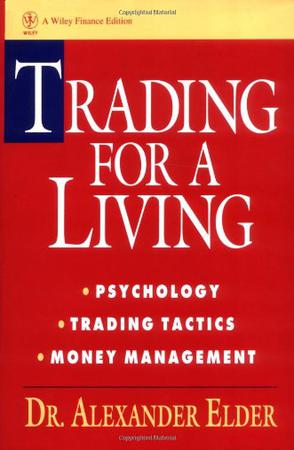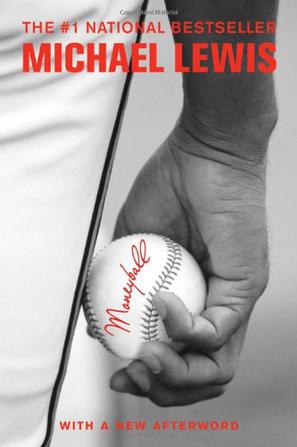欢迎来到相识电子书!
标签:投机学
-
Trading for a Living
在线阅读本书 Trading for a Living Successful trading is based on three M′s: Mind, Method, and Money. Trading for a Living helps you master all of those three areas: ∗ How to become a cool, calm, and collected trader ∗ How to profit from reading the behavior of the market crowd ∗ How to use a computer to find good trades ∗ How to develop a powerful trading system ∗ How to find the trades with the best odds of success ∗ How to find entry and exit points, set stops, and take profits Trading for a Living helps you discipline your Mind, shows you the Methods for trading the markets, and shows you how to manage Money in your trading accounts so that no string of losses can kick you out of the game. To help you profit even more from the ideas in Trading for a Living, look for the companion volume––Study Guide for Trading for a Living. It asks over 200 multiple–choice questions, with answers and 11 rating scales for sharpening your trading skills. For example: Question Markets rise when ∗ there are more buyers than sellers ∗ buyers are more aggressive than sellers ∗ sellers are afraid and demand a premium ∗ more shares or contracts are bought than sold ∗ I and II ∗ II and III ∗ II and IV ∗ III and IV Answer B. II and III. Every change in price reflects what happens in the battle between bulls and bears. Markets rise when bulls feel more strongly than bears. They rally when buyers are confident and sellers demand a premium for participating in the game that is going against them. There is a buyer and a seller behind every transaction. The number of stocks or futures bought and sold is equal by definition. -
How to Trade in Stocks
The Success Secrets of a Stock Market Legend Jesse Livermore was a loner, an individualist-and the most successful stock trader who ever lived. Written shortly before his death in 1940, How to Trade Stocks offered traders their first account of that famously tight-lipped operator's trading system. Written in Livermore's inimitable, no-nonsense style, it interweaves fascinating autobiographical and historical details with step-by-step guidance on: Reading market and stock behaviors Analyzing leading sectors Market timing Money management Emotional control In this new edition of that classic, trader and top Livermore expert Richard Smitten sheds new light on Jesse Livermore's philosophy and methods. Drawing on Livermore's private papers and interviews with his family, Smitten provides priceless insights into the Livermore trading formula, along with tips on how to combine it with contemporary charting techniques. Also included is the Livermore Market Key, the first and still one of the most accurate methods of tracking and recording market patterns -
Moneyball
Billy Beane, general manager of MLB's Oakland A's and protagonist of Michael Lewis's Moneyball, had a problem: how to win in the Major Leagues with a budget that's smaller than that of nearly every other team. Conventional wisdom long held that big name, highly athletic hitters and young pitchers with rocket arms were the ticket to success. But Beane and his staff, buoyed by massive amounts of carefully interpreted statistical data, believed that wins could be had by more affordable methods such as hitters with high on-base percentage and pitchers who get lots of ground outs. Given this information and a tight budget, Beane defied tradition and his own scouting department to build winning teams of young affordable players and inexpensive castoff veterans. Lewis was in the room with the A's top management as they spent the summer of 2002 adding and subtracting players and he provides outstanding play-by-play. In the June player draft, Beane acquired nearly every prospect he coveted (few of whom were coveted by other teams) and at the July trading deadline he engaged in a tense battle of nerves to acquire a lefty reliever. Besides being one of the most insider accounts ever written about baseball, Moneyball is populated with fascinating characters. We meet Jeremy Brown, an overweight college catcher who most teams project to be a 15th round draft pick (Beane takes him in the first). Sidearm pitcher Chad Bradford is plucked from the White Sox triple-A club to be a key set-up man and catcher Scott Hatteberg is rebuilt as a first baseman. But the most interesting character is Beane himself. A speedy athletic can't-miss prospect who somehow missed, Beane reinvents himself as a front-office guru, relying on players completely unlike, say, Billy Beane. Lewis, one of the top nonfiction writers of his era (Liar's Poker, The New New Thing), offers highly accessible explanations of baseball stats and his roadmap of Beane's economic approach makes Moneyball an appealing reading experience for business people and sports fans alike.
热门标签
下载排行榜
- 1 梦的解析:最佳译本
- 2 李鸿章全传
- 3 淡定的智慧
- 4 心理操控术
- 5 哈佛口才课
- 6 俗世奇人
- 7 日瓦戈医生
- 8 笑死你的逻辑学
- 9 历史老师没教过的历史
- 10 1分钟和陌生人成为朋友



